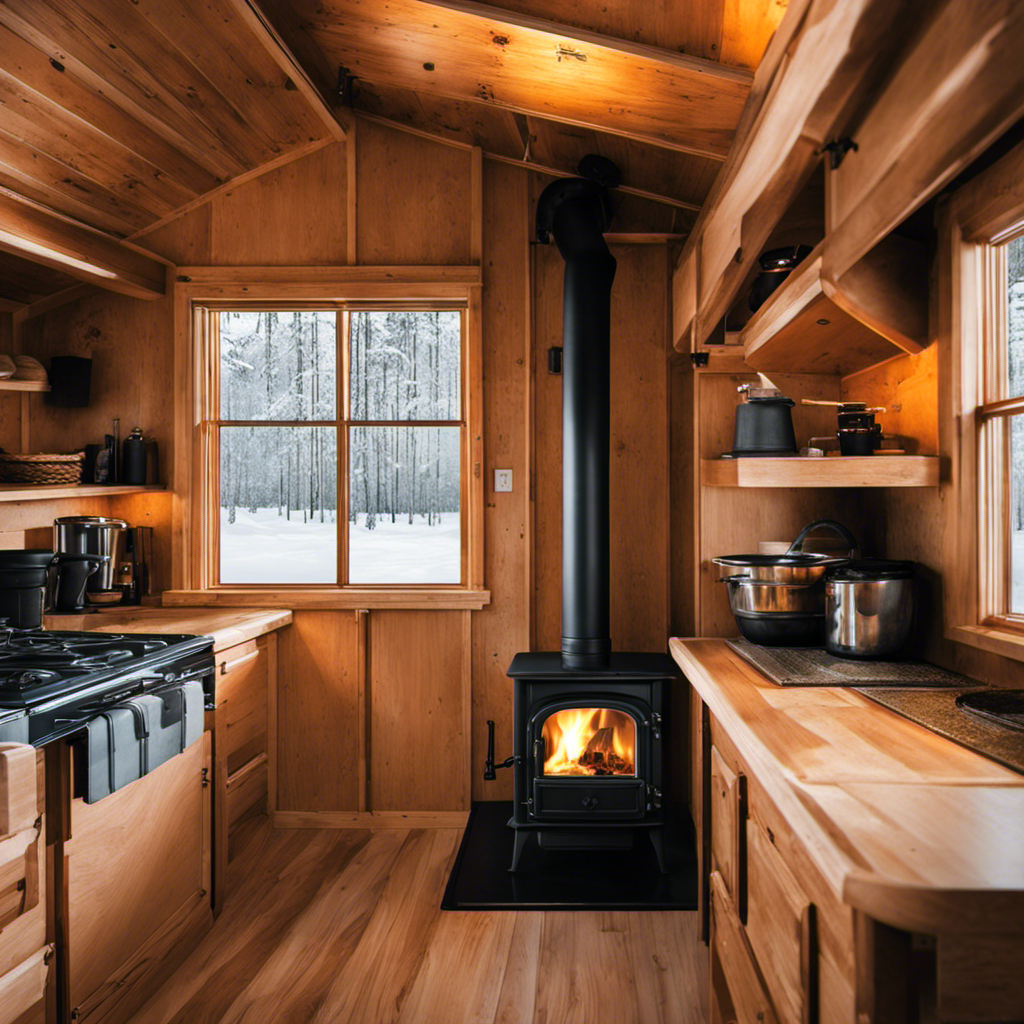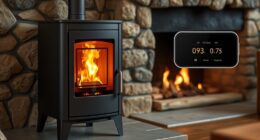As an experienced wood stove owner, I am excited to share my reliable method for safely extinguishing a wood stove.
Putting out a wood stove requires careful assessment, the right tools, and proper control of the air supply.
In this article, I’ll guide you step by step on how to remove burning wood and embers, cool and clean the stove, and ensure a safe and efficient process.
So, let’s dive in and master the art of extinguishing a wood stove!
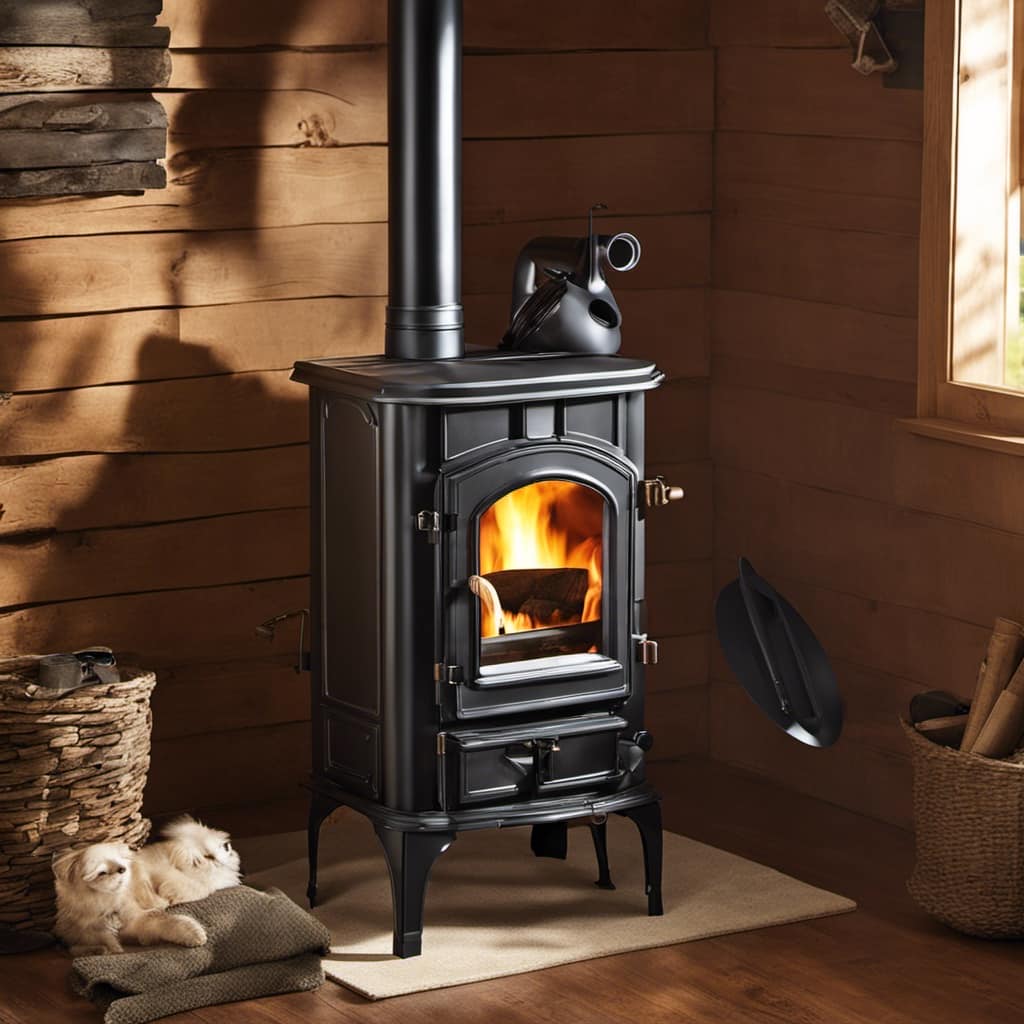
Key Takeaways
- Evaluate the fire’s intensity by observing the color and brightness of the flames.
- Take note of any excessive smoke production, which may indicate a smoldering fire or chimney buildup.
- Thoroughly assess the fire to ensure fire safety and determine if extinguishing is necessary.
- Use proper tools and safety equipment when handling hot materials and disposing of ashes.
Assessing the Fire
I’m checking the fire to see if it needs to be put out.
When assessing a wood stove fire, it’s essential to evaluate the fire’s intensity and check for potential hazards. To determine the fire’s intensity, I observe the flames and their color. A strong, intense fire will have bright orange or yellow flames, while a weak fire may have dull or flickering flames. Additionally, I take note of any smoke production. Excessive smoke can indicate a smoldering fire or a buildup of creosote in the chimney.
As I evaluate the fire, I also keep an eye out for potential hazards, such as loose or burning embers, debris, or flammable materials nearby. By thoroughly assessing the fire, I can ensure proper fire safety and determine if extinguishing is necessary.
Gathering the Necessary Tools
After collecting all the essential tools, I’m ready to start tackling the wood stove. The first step in stove maintenance is ensuring fire safety precautions are in place. Here are three important things to keep in mind:

- Always wear protective gloves to prevent burns when handling hot materials.
- Use a metal ash bucket with a tight-fitting lid to safely dispose of ashes.
- Regularly inspect the stove for any signs of wear or damage, such as cracks or loose fittings.
To maintain a safe and efficient wood stove, it’s crucial to follow these maintenance practices.
Controlling the Air Supply
Controlling the air supply is essential for maintaining the efficiency and heat output of my wood stove. By adjusting dampers and managing draft, I’m able to regulate the amount of oxygen that enters the firebox. This allows me to control the burn rate and ensure that the fire is neither smothered nor burning too fiercely.
The primary damper, located on the stovepipe, controls the overall airflow. By opening it fully, I can increase the draft and encourage a more robust fire. Conversely, closing the damper restricts the airflow, slowing down the burn rate.
In addition to the primary damper, some wood stoves also have secondary air controls. These additional dampers allow me to fine-tune the combustion process by introducing fresh air directly into the firebox, promoting a more complete and efficient burn.
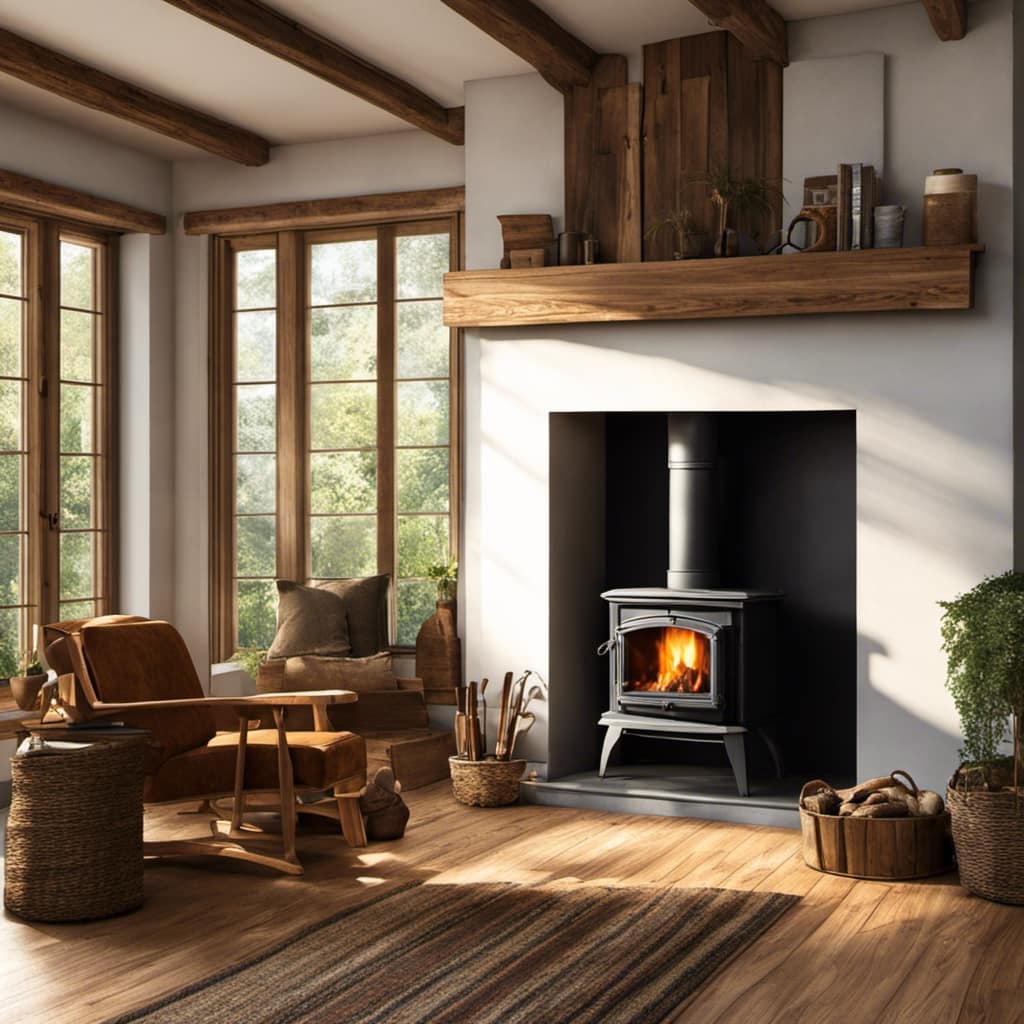
Removing Burning Wood and Embers
To safely remove burning wood and embers from the firebox, I carefully use a set of fireplace tongs. This essential tool allows me to handle hot ashes and extinguish any remaining embers effectively.
Here are three important steps to follow when removing hot ashes and extinguishing remaining embers:
Gently scoop out the hot ashes from the firebox using the fireplace tongs, ensuring that they’re fully extinguished.
Transfer the ashes to a metal container specifically designated for ash disposal. This container should be kept away from flammable materials and placed on a non-combustible surface.
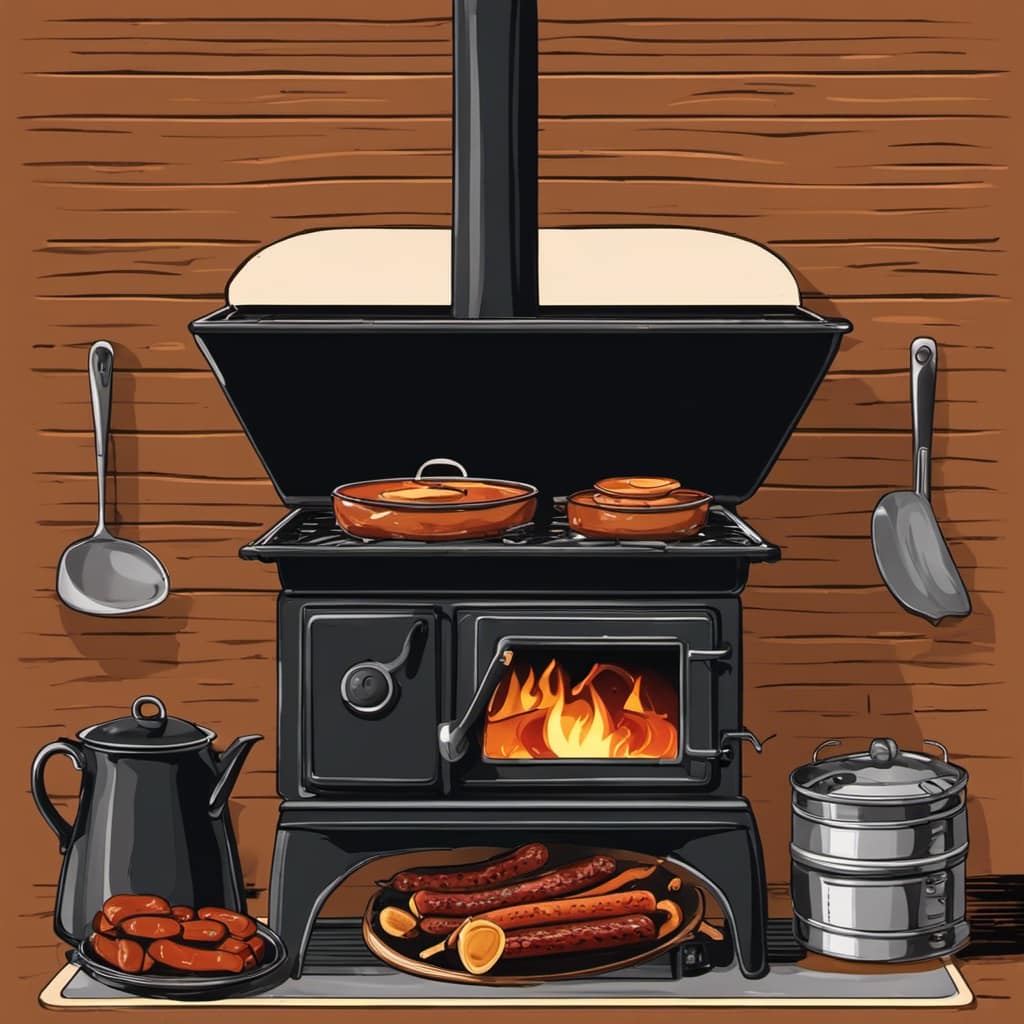
Allow the ashes to cool completely before disposing of them in a safe manner, such as in a designated ash disposal area or by contacting your local waste management facility.
Safely Cooling and Cleaning the Stove
I let the stove cool down completely before beginning the cleaning process. Safety precautions are essential when handling a hot wood stove. To start, I put on heat-resistant gloves and made sure I had a fire extinguisher nearby.
Once the stove was cool, I carefully removed the ashes and embers using a metal scoop and placed them in a metal container. It’s important to let the ashes cool completely before disposing of them, as they can remain hot for several hours.
I then wiped down the interior and exterior of the stove using a damp cloth and a mild cleaning solution. After cleaning, I made sure to properly dispose of the ashes by placing them in a metal container and storing them in a safe area away from any flammable materials.
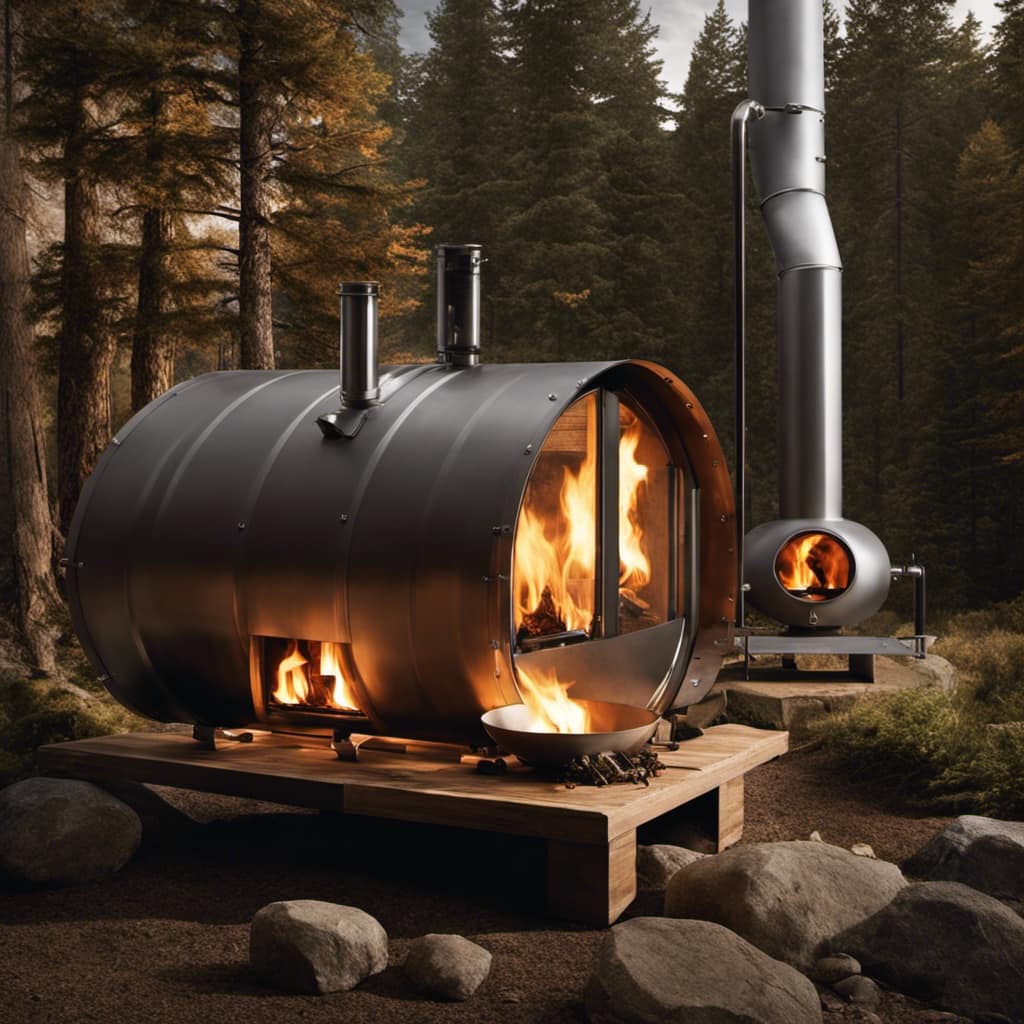
Following these safety precautions and proper disposal methods ensures a clean and safe wood stove.
Frequently Asked Questions
How Do I Properly Dispose of the Ashes From My Wood Stove?
When disposing of ashes from my wood stove, it’s important to follow proper disposal methods and take safety precautions. First, allow the ashes to cool completely before transferring them to a metal container. Then, store the container outside away from flammable materials.
Can I Use Water to Extinguish a Fire in My Wood Stove?
Yes, you can use water to put out a fire in your wood stove, but it is not recommended. It is safer and more effective to use sand or a fire extinguisher specifically designed for wood stove fires.
Is It Safe to Leave the Stove Unattended While It’s Still Cooling Down?
Leaving a wood stove unattended before it’s completely cooled down is not safe. It’s important to take proper safety precautions, such as ensuring all embers are extinguished and the stove is cool to the touch.

What Should I Do if I Accidentally Spill Water on the Hot Stove?
If water spills on the hot stove, immediately turn off the heat source and unplug it. Use caution and avoid contact with the hot surface. Wait for it to cool down completely before cleaning up to prevent injury.
Are There Any Specific Safety Precautions I Should Take Before Attempting to Put Out a Wood Stove Fire?
Before attempting to put out a wood stove fire, it is crucial to take precautions for your safety. This includes wearing protective gear, ensuring proper ventilation, and handling hot ashes with extreme caution.
Can the Same Techniques be Used to Put Out a Wood Stove Fire as to Install a Wood Stove?
When it comes to a wood stove fire, the same techniques used to install a wood stove in a shed or shop can be effective for putting out a fire. Properly understanding the installation process can help in safely managing and extinguishing a potential fire situation.
Conclusion
In conclusion, putting out a wood stove requires careful assessment, the right tools, and proper techniques.
By controlling the air supply, removing burning wood and embers, and safely cooling and cleaning the stove, you can ensure the fire is extinguished effectively.

Remember, safety should always be the top priority when dealing with a wood stove. So, follow these steps confidently and maintain a well-maintained and safe environment in your home.
Growing up surrounded by the vast beauty of nature, Sierra was always drawn to the call of the wild. While others sought the comfort of the familiar, she ventured out, embracing the unpredictable and finding stories in the heartbeat of nature.
At the epicenter of every remarkable venture lies a dynamic team—a fusion of diverse talents, visions, and passions. The essence of Best Small Wood Stoves is crafted and refined by such a trio: Sierra, Logan, and Terra. Their collective expertise has transformed the platform into a leading authority on small wood stoves, radiating warmth and knowledge in equal measure.







